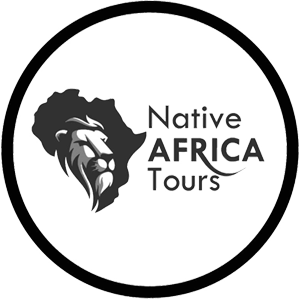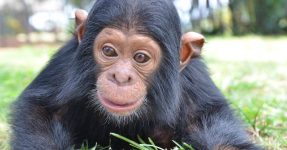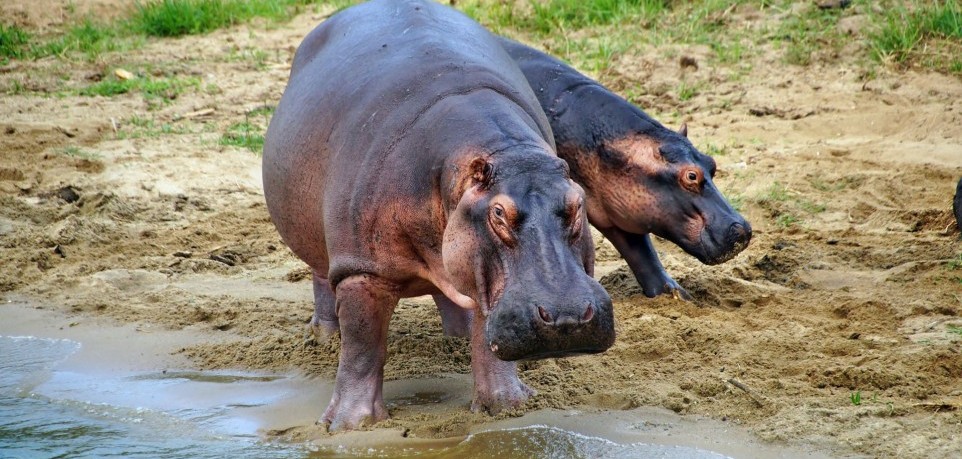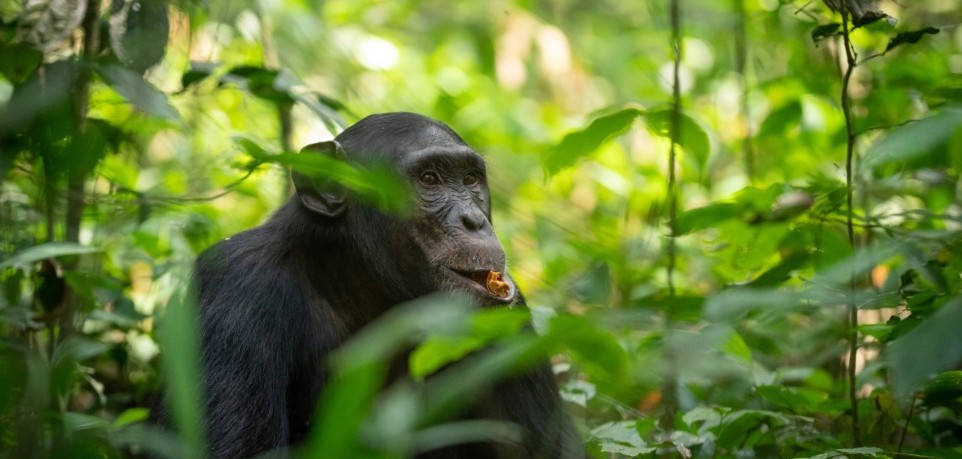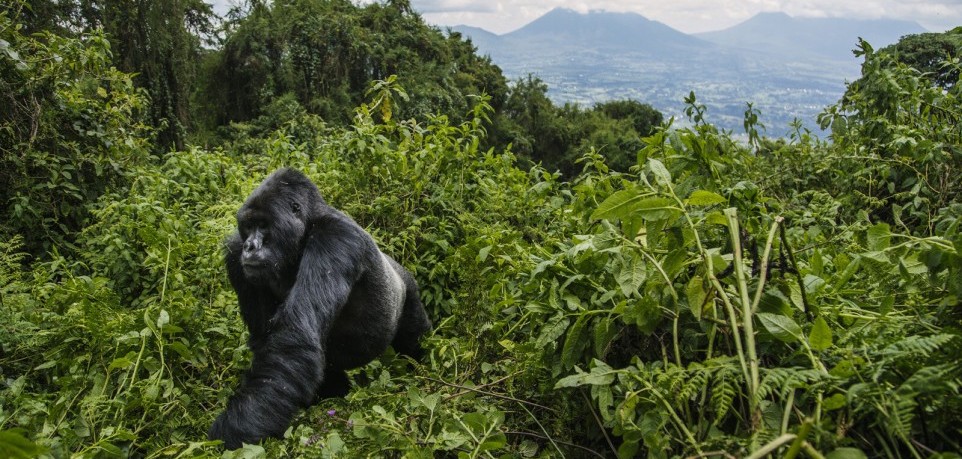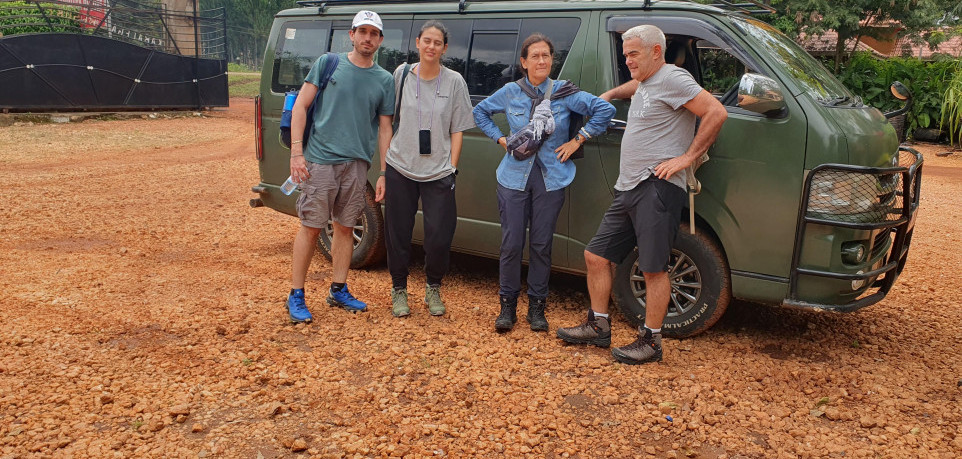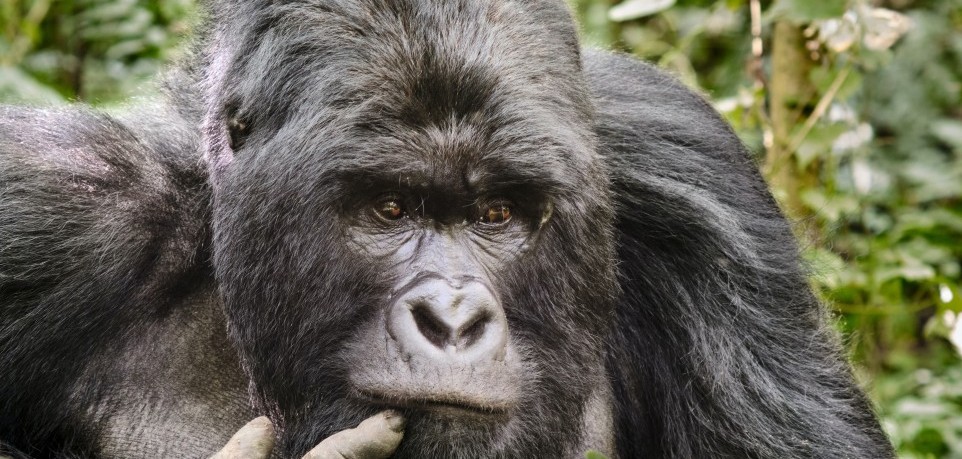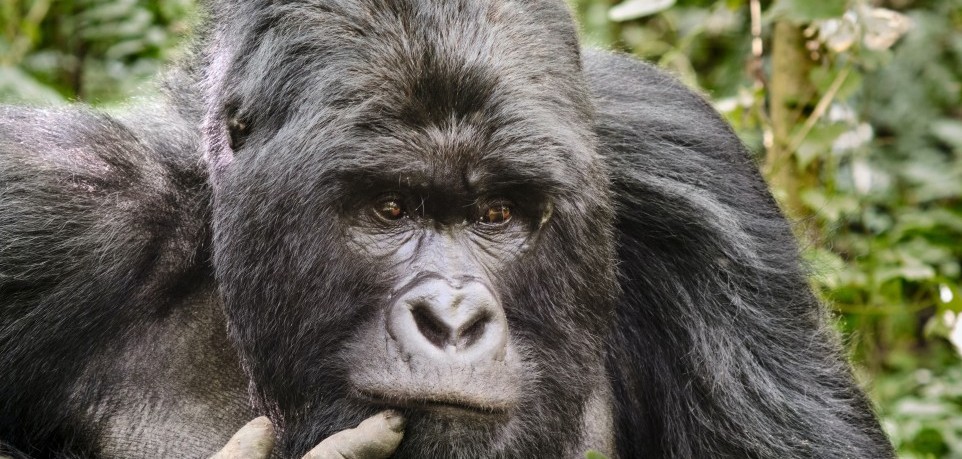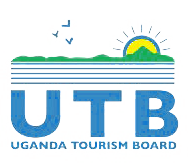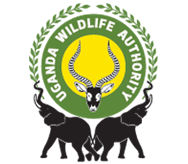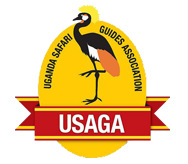Queen Elizabeth National Park – A Medley of Wonders
Over a thousand travelers a year make a pilgrimage to the spectacular Queen Elizabeth National Park for several reasons, including experiential tours, chimpanzee trekking, game drives, birding, walking safaris/guided bush walks and so much more. While here, stunning Crater Lakes, sweeping savannah plains, picture-perfect freshwater lakes, jaw-dropping forest in the Kyambura Gorge, a plethora of wildlife as well a wide array of bird species all come together in Queen Elizabeth National Park.
Queen Elizabeth National Park spans over 488,774 acres, making it the second-largest National Park in Uganda. Sweeping plains, Crater Lakes, and other water bodies, woodlands, and forests make up this Protected Area that sprawls from the Lake George area in the north-eastern side to Lake Edward in the south-western part. This Park is nestled in several western districts that include Kamwenge, Kasese, Rubirizi, and Rukungiri.
The History of Queen Elizabeth National Park
Many tribes especially Bakonzo and Bakiga spent years and called the current Protected Area home and hunting grounds before the arrival of Colonialists. The area was gazetted as one of Uganda’s oldest National Parks in 1952 as Kazinga National Park, although its name was changed in 1954 to honor the historical visit of Queen Elizabeth II thus Queen “Elizabeth National Park”.
Queen Elizabeth National Park is in western Uganda, within districts of Kamwenge, Kasese, Rubirizi, and Rukungiri, and lies astride the Equator. This massive Ugandan Park features about four entrance gates as well as one developed visitor Center (at Mweya).
What to see on a tour in Queen Elizabeth National Park
Wildlife
Wildlife is the first thing that safari goers think of when they hear Queen Elizabeth National Park. There are about 95 species of mammals that include bushbucks, black and white colobus monkeys, Cape Buffaloes, spotted hyenas, chimpanzees serval cats, Olive baboons, common elands, duikers, Uganda Kobs, Banded mongoose, common warthogs, lions, leopards, vervet monkeys, elephants, Topis, Hippos, Defassa waterbucks, to mention but a few. If you have never seen many Hippos in one place, then a trip to Queen Elizabeth National Park will make your experience complete.
Birds
Thanks to the 600 species of birds, Queen Elizabeth National Park is one of the 33 Important Birding Areas in the country and surprisingly offers shelter to about 60% of the country’s total bird species. Commonly-sighted birds are pin-tailed whydah, shoebill storks, African skimmer, Great white and pink-backed Pelicans, swamp flycatcher, Grey-headed kingfishers, Red-chested sunbirds, Pel’s fishing owls, African Mourning doves, Papyrus gonolek, the colorful pink flamingos, Pel’s fishing owls, Collared pratincoles, Nubian woodpecker, Palmnut vultures, slender-tailed nightjar, to mention but a few.
The equator crossing
Queen Elizabeth National Park is one of the few places in Uganda where travelers can experience Equator experiments. For your visit, get a chance to take photos as well as experiment with what it feels like to stand on two Hemispheres at the same time. Other must-see attractions in this Park are the beautiful Lakes, Kyambura Gorge and so much more.
Activities done by travelers in Queen Elizabeth National Park
Game viewing experiences
Watch the sunrise during the morning game drive by taking a pick of the many game tracks in Queen Elizabeth National Park. The most popular game tracks are the ones that involve driving through the northern plains as well as Kasenyi Plains where nocturnal animals can still be found hunting through the tall grass. Also expect African bush elephants, Olive baboons, Uganda Kobs, Hippos, Defassa waterbucks, giant forest hogs, Cape buffaloes, bushbucks, Topis, Banded mongoose, duikers, and warthogs among others.
Boat ride along the Kazinga Channel.
One of the main reasons for visiting Queen Elizabeth National Park is to visit the Kazinga Channel, which links Lakes Edward and George. It has high concentrations of Hippos and Nile crocodiles that can be spotted during morning, afternoon, or sundowner boat cruises. Others expected are Defassa waterbucks, Uganda Kobs, African bush elephants, Topis, bushbucks, and buffaloes lazing along the banks of the Kazinga Channel. Lots of bird species should also be expected during this boat ride that lasts 2-3 hours.
Birding expeditions
If you never thought of becoming an enthusiastic bird watcher, then Queen Elizabeth National Park is the place to be because over 600 species are found here. This makes the Park one of the 33 Important Birding Areas in the country and hot spots are Kazinga Channel, the crater lakes for migratory species, Lake Kikorongo, the Katunguru Bridge area, the Maramagambo forest, the Ishasha sector, the Katwe area, the Kasenyi sector, and Mweya Peninsula among others.
Expect sights and sounds of white-tailed larks, African fish eagles, African broadbills, white-winged terns, martial eagles, grey-crowned cranes, Malachite kingfishers, Great white pelicans, Papyrus gonolek, pink-backed pelicans, shoebill storks, great blue turacos, pied kingfishers, Red-chested sunbirds, and many others.
Chimpanzee trekking in Kyambura Gorge
Just a short drive across the sweeping savannah plains leads visitors to Kyambura Gorge for chimpanzee trekking. The adventure is done in two sessions-mornings and afternoon, starting at 8:00 am and 2:00 pm respectively.
They last anywhere between two and four hours including the one hour with these Great Apes. This forest is also a haven for Olive baboons, black and white colobus monkeys, blue monkeys as well as red-tailed monkeys.
Enjoy some of the Park’s experiential tours.
Experiential tours such as Hippo census, lion tracking, and Mongoose tracking are offered in Uganda’s Queen Elizabeth National Park, thus making it one of the few places in Africa offering such exceptional experiences. While here, travelers should be prepared to follow a team of researchers to find as well as learn different habituation calls of animals being studied.
Guided walking safaris
Most animals in Queen Elizabeth National Park have hidden habitats thus difficult to spot during game drives and the best way to see them is by undertaking a guided bush walk. This is offered all year round and done in the company of an armed park Ranger.
Village/community tours
There is no better way to learn about the riveting lifestyle, culture, traditions, and heritage of the western region than meeting the locals, via village or community tours. Available options around Queen Elizabeth National Park include the Kikorongo Women Community, Nyanz’ibiri Cave Community, Leopard Village, and the unforgettable Kasoga Community Experience where traditional dance performances, handcraft-making demonstrations, and community birding experiences are offered.
Hot air Balloon safari
During your Queen Elizabeth National Park tours, you can also get the chance to enjoy the aerial views of the sweeping Savannah plains, Crater Lakes, the Kyambura Gorge, and many other places of Savannah Park.
Exquisite places to stay while in Queen Elizabeth National Park
Some of the exquisite places to stay during Queen Elizabeth National Park tours are Hippo Safari Lodge, Elephant Plains Lodge, Mweya Hostels and Cottages, Queen Elizabeth Safari Camp, Pumba Safari Cottages, Bush Camp, Jacana Safari Lodge, Kyambura Game Lodge, Kyambura Tented Camp, Ishasha Wilderness camp, Queen Elizabeth Bush Lodge, Ihamba Safari Lodge, Simba Safari Camp, Mweya Safari Lodge, Katara Lodge, Enganzi Game Lodge, Kazinga Channel View Resort, Kasenyi Safari Camp, to mention but a few.
When to Explore Queen Elizabeth National Park?
Queen Elizabeth National Park can be explored throughout the year but the dry season from May to September and December offers optimum game viewing as animals congregate around water points and vegetation is shorter thus offering better visibility compared to the rainy season whereby animals hide in the tall grass.
How to reach Queen Elizabeth National Park?
While road transport is the commonest means of getting to Queen Elizabeth National Park, flights can be arranged from Entebbe Airport or Kajansi Airstrip to Kasese, Mweya, or Ishasha Airstrips.
However, if you choose to go by road, then you need a 4WD Vehicle and expect 5-6 hours on the road via two popular routes. The Kampala-Masaka-Mbarara-Bushenyi-Kasese is the most popular but travelers can also use the Kampala-Mubende-Fort Portal-Queen Elizabeth National Park route.
